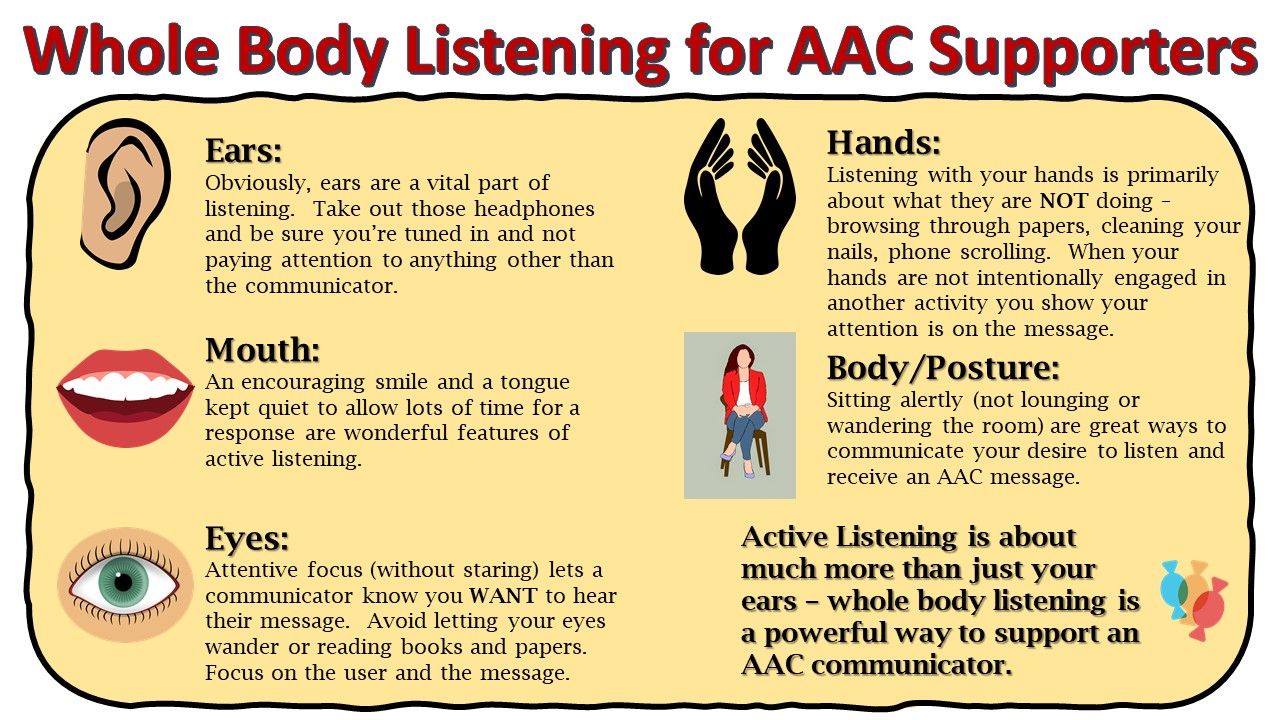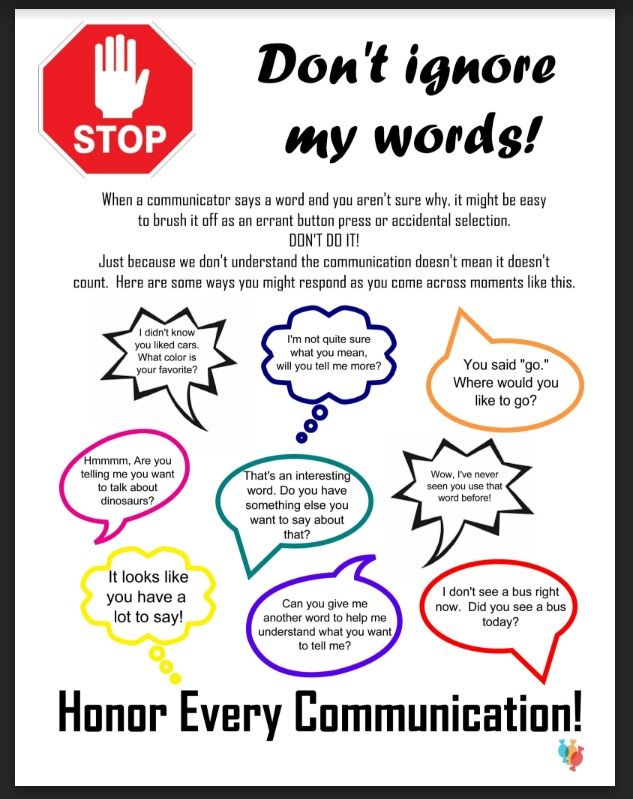What Active Listening Looks Like: Giving Communicators the Chance to be Heard
AAC is all about communication (spoiler alert – that's the "c" in AAC).
But sometimes even diligent and well-intentioned AAC supporters get stuck on a track of talking "at" an AAC user and then expecting them to respond with specific words or buttons. Sometimes a communication session starts to look a little more like a game of "fill in the blank" or "find the button" than an actual conversation.
As AAC supporters, one or our most essential roles is to become an active listener.
Now, it's easy to view listening as kind of a passive activity – sit back and let another person's words come tumbling toward you.
But listening can be, strike that, listening should be a much more involved activity than submissively allowing selected words to plod their way into your ears.
Active listening takes focus and desire, but it will make ALL the difference to your communicator.
Here are some important tips to help you beef up your listening skills as you work to support AAC communication.
Prep for Success:
Being an active listener actually starts before your AAC communicator even enters the room. Clear your table or work area of distractions that might make it difficult for your communicator to focus. This might mean removing pictures or toys that could interfere with your session goal.
Have your materials ready and quickly accessible so you don't need to leave to go find things and can give your communicator your full attention. Pay attention to the lighting, background sounds (is a radio or cell phone notification going to intrude), and other concerns. Preparing the space ahead of time will cut down on frustrations for both you and your communicator.
Whole Body Listening Matters:
Sure, our ears take the lion share of the listening load, but active listening is a team sport and the rest of our body should get in on that action.
An active listener has their attention focused on the communicator. This is not meant to make the other person uncomfortable (and you may need to adjust to fit specific individual needs) but instead to give the message that your words are worth my attention. Even if you're trying not to "stare" at a communicator, you communicate your interest if you are NOT scrolling your phone, checking your watch, doodling, or cleaning your fingernails.
And speaking of fingers, your hands have a lot to say when it comes to active listening. By keeping focused instead of shuffling papers, cleaning the area, or preparing the next activity your hands let your communicator know you are actively listening when they show that there is not another activity more important for them to be doing than being ready to receive the communicator's message.
The little things really do speak volumes. Smile, sit alertly instead of wandering the room, mirror your communicators emotions (NOT copying their expressions exactly), nod or cock your head as a silent prompt – active listening involves every part of you.

Take the Next Step:
As your communicator starts to share a message – any message – be sure you validate their communication and then take the next step.
Take the time to acknowledge EVERY SINGLE COMMUNICATION shared by your AAC user. You may not understand perfectly, it may seem off topic, you might think this was an accidental button press – doesn't matter. Validate every time. Whether you say, "Hmm, interesting," or "I didn't know you liked beetles" or even "I've never heard you use that word before" you let a communicator know you are listening when you acknowledge the words that they say.

Once you've acknowledged the words, take the next step. This could be modeling an additional word to add on to the phrase (you said "play" do you want to "play outside?"), this could be asking a clarifying question (You saw a movie? What movie did you watch? Were you with your family?), you could restate or reflect the message that you heard (You said you like cars, I like cars too). Even if their communication is off topic, acknowledge their words and try to redirect (it seems like you want to talk about animals, let's work on our project first and then I want to hear about your favorite animal).
You demonstrate that you care what the communicator has to say when you build that communication into an interaction instead of just a one side vocalization.
Pay attention to favorites shared or common themes, maybe even take notes, then bring those up in future communications. When you give attention to the things your communicator chooses to speak, you teach them that their words matter and that you want to hear from them no matter the topic.
_______________________________________________________
